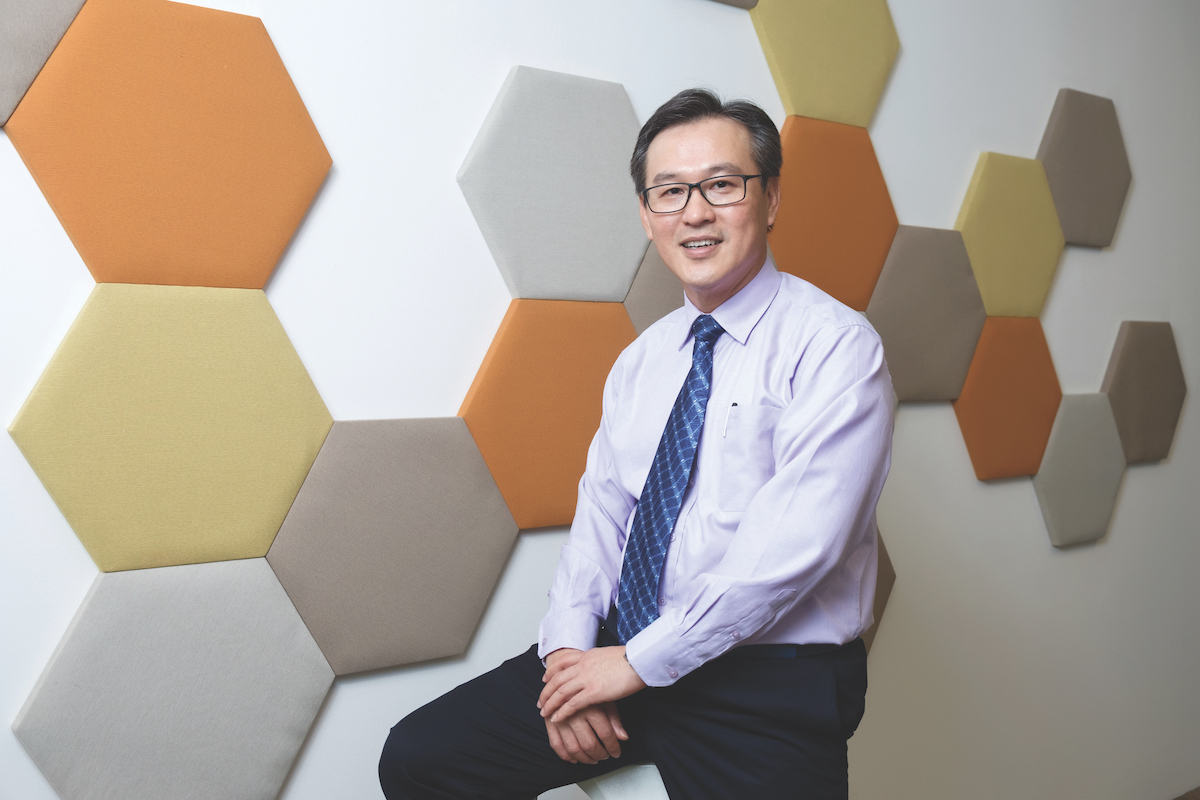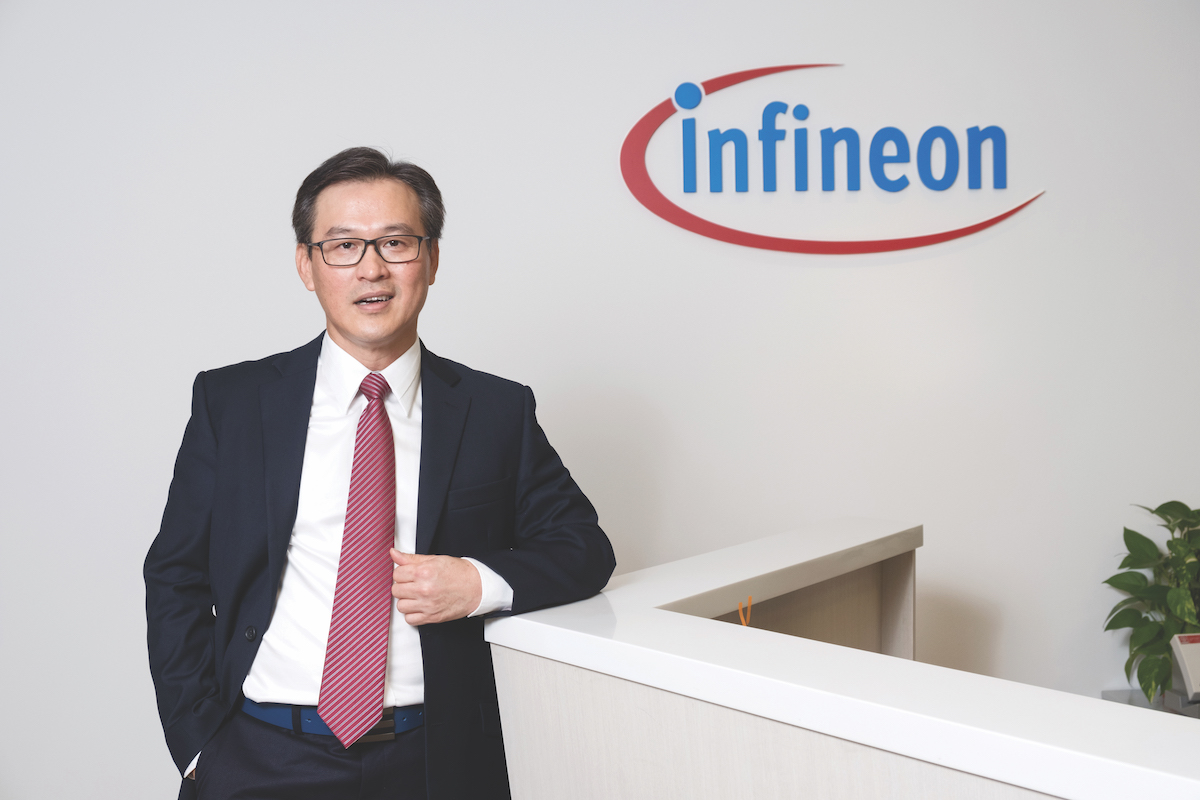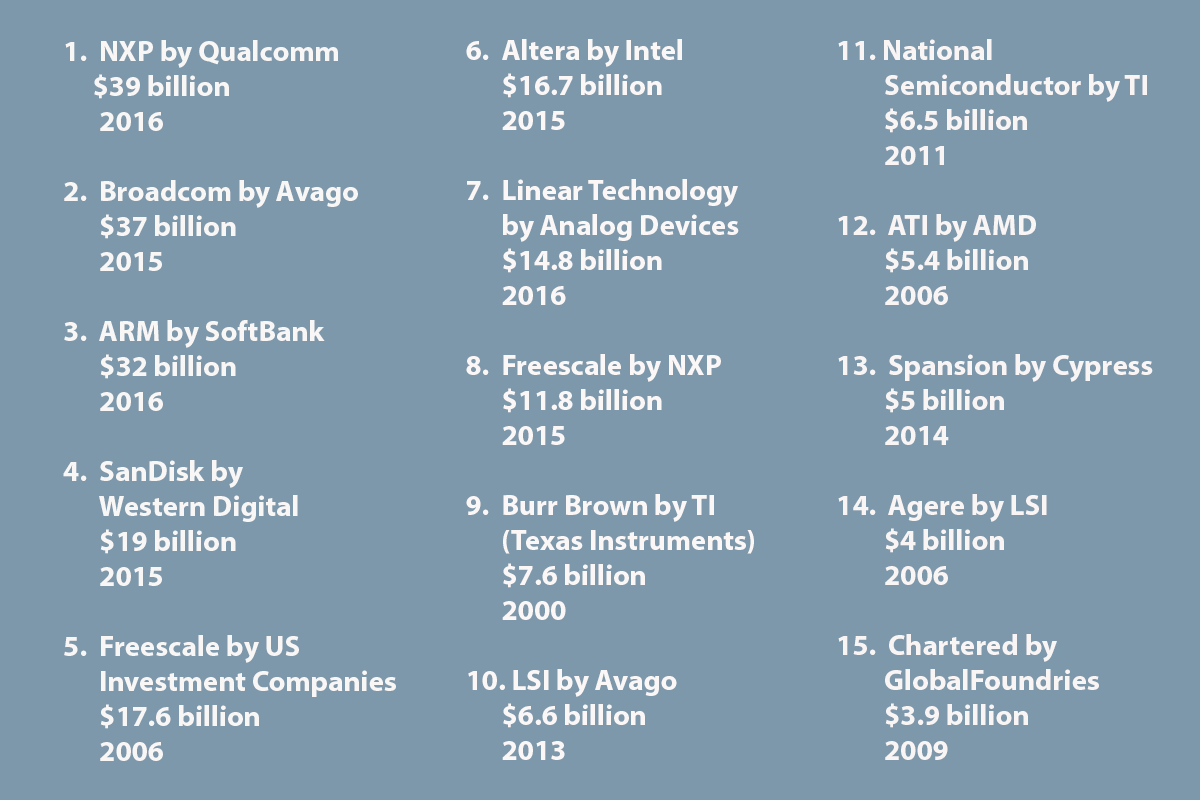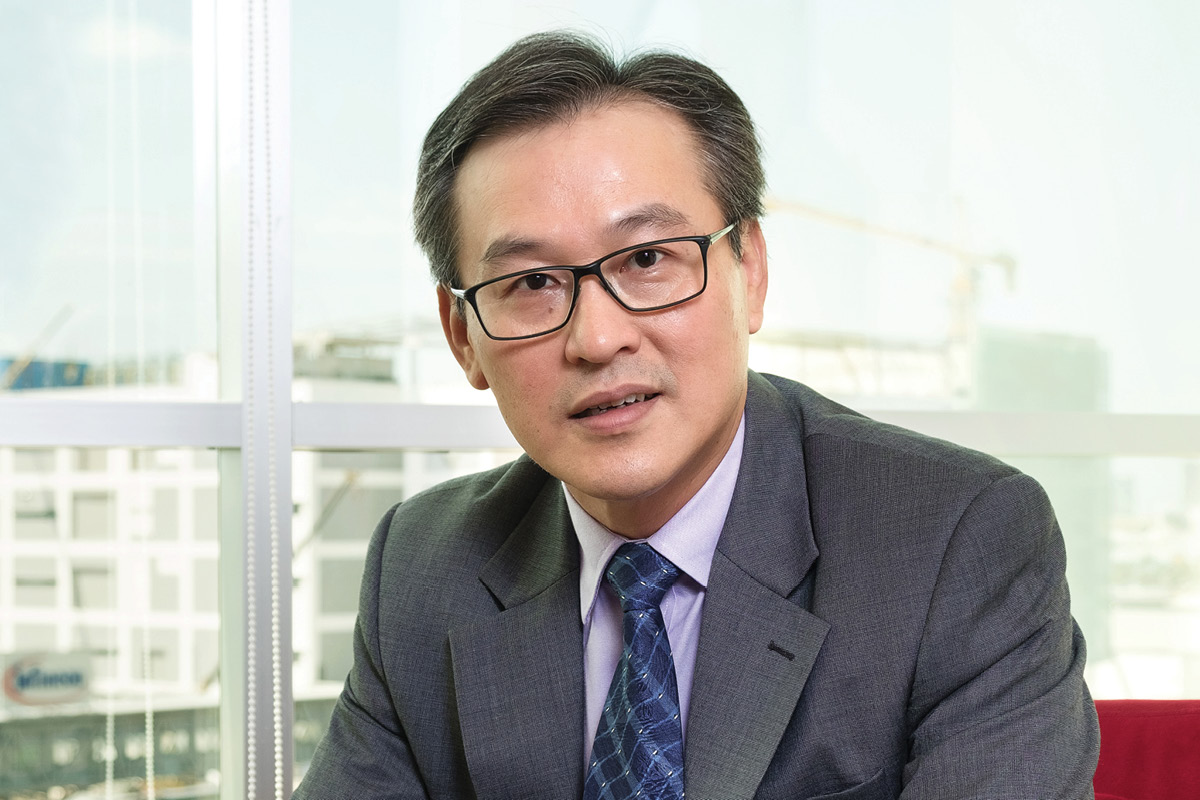On Jalan Batu Berendam, a busy thoroughfare in the Malaysian coastal town of Melaka, 2 of the global powerhouses in the semiconductor industry face each other in all of their expansive manufacturing site glory. On one side, representing America, is Texas Instruments, or TI as it is more commonly referred to.
On the other, Infineon Technologies, the German giant. Despite their shared street address, there is limited interaction between the 2 companies, unsurprising given that each is busy developing behind-closed-doors, game-changing technologies destined to shape the future.
Yet Lee Cheong Chee need only look outside his office window to be reminded that, even though they are direct competitors, the 2 approaches to the business vastly differ. An industry veteran who today is the managing director of Infineon Technologies (Malaysia), Lee knows better than most: he has held executive roles at both companies.
“What comes to mind as the most distinctive difference between the American and German way of doing business is that the Americans are very bottom-line driven. There is less emphasis on the processes and how you actually achieve the results. They are more interested in simply getting the job done — while at Infineon Technologies, we try to focus on both.
We want the results, of course, but we also consider how we achieve them to be important as well,” he explains. “I also think that Americans take a buy, hire and fire approach to talent, whereas we believe in talent development.”
The German way
Lee has spent much of his life immersed in the American way. After studying for his bachelor’s degree in electrical engineering in the shadow of past presidents at the South Dakota School of Mines and Technology (the college is located in Rapid City, at the base of Mount Rushmore), he returned home to Malaysia in 1998 to an engineering position with American company National Semiconductor, or NSC.

Appointed managing director of its Melaka Plant in 2006, his professional world was shaken up when the company was acquired by TI in 2011. “I had been with NSC for 23 years but, under TI, I just found a completely different culture that I couldn’t find a way to fit into,” he says. Realising he had a high market value, as he refers to it, he looked elsewhere, joining Dutch company NXP in 2012 before being headhunted by Infineon Technologies at the start of 2014.
Joining Infineon Technologies was a real eye-opener for me, and I much prefer the German way of doing business.
It’s safe to say he hasn’t looked back. “Joining Infineon Technologies was a real eye-opener for me, and I much prefer the German way of doing business. I see their kind of culture as much more sustainable.” Infineon Technologies has enabled him to take a very active role in promoting talent development, an aspect of his role that he is passionate about. It has been more than a year since he was chosen as one of a select group of CEOs to participate in the Malaysian Ministry of Higher Education initiative, the CEO@Faculty Programme.
Among the subjects he lectures in at the University of Technology Malaysia in Melaka are the benefits of not only joining a growth industry, but also Infineon Technologies as an employer of choice. “Working for a German company has allowed me to do this, whereas if I were in an American company this would not be as aligned with their corporate culture,” he believes.
To infinity & beyond
Infineon Technologies has a long history in Malaysia. The Melaka site opened in 1973 when the company was still the semiconductor subsidiary of Siemens. Infineon Technologies, a name that draws inspiration from the English word ‘infinity’ and the Greek word ‘eon’, or ‘eternity’, was incorporated as a standalone entity on 1 April 1999 and, soon after, listed on the Frankfurt Stock Exchange.
“Our site in Melaka is Infineon Technologies’ largest in the world for manufacturing, and the largest private employer in the state of Melaka,” he says, hinting at both the significance of this outpost and the responsibility that lies on his shoulders. Along with being Infineon Technologies’ biggest assembly and test facility, he has a 250-strong IT team serving all the offices around the world and 500 on-site R&D engineers.
“We employ around 8,500 people, roughly a quarter of the total workforce of the company,” he says, adding that Infineon Technologies has just over 36,000 employees worldwide. Lee oversees a busy operation, and it’s no surprise when he says that Melaka currently contributes 30% of total company revenue. “Sustaining our growth to enable overall company growth is one of my main challenges,” he admits.
With this in mind, Lee has been instrumental in petitioning Infineon Technologies’ Munich headquarters for a significant expansion of the site, including an additional 12,000 square metres of manufacturing capacity. The German Ambassador to Malaysia, Holger Michael, Malaysia’s Deputy Minister of International Trade and Industry, Ahmad Maslan, and Melaka Chief Minister Idris Haron were 3 of the luminaries who participated with Lee in the groundbreaking ceremony held in late-2015. The project is due to be fully completed by 2020, with much of the building work already finished.
New recruits
Lee has calculated that the expansion will provide 30% more space, and he believes this will allow his site to hit growth targets for at least another 3 years — although he hasn’t been authorised to match this growth like-for-like with new recruits.

“It doesn’t make sense to grow by 30%; that’s close to 3,000 additional people,” he says. Instead, his headcount has been capped at 10,000.He realises, however, that building more factories every time he needs to enable growth is not a viable long-term solution. The answer, according to Lee, therefore lies in 2 areas. One is outsourcing the manufacturing of certain products to trusted partners.
“This will free up capacity to allow us to focus on innovating the products of the future,” he says. The other is automation. “And I don’t necessarily mean automation in terms of robotics, but rather exploring different ways of working, alternative approaches to managing the site, and how we can simplify the workflow,” he says.
“These are the key strategic challenges I am currently working on.” As we talk, it dawns on him that, if he were still working to the American way, he would probably have been made to bring in an outside solutions consultant by now, rather than recruiting new talent and trying to solve it internally as a team, like he has been allowed to do.
Semiconductor specialties
Semiconductors may be an integral component in almost everything considered indispensable in today’s society, from smartphones to washing machines and refrigerators, but Lee firmly believes in sticking to one’s specialities — which, for Infineon Technologies, means 4 specific segments: automotive, power management and multimarket, industrial power control, and chip card and security.
“At the moment, we are actively focusing on automotive electronics in particular, as 40% of our revenue comes from here,” he says. In the most recent rankings, Infineon Technologies has a 10.4% share of the US$27.4-billion automotive semiconductor market, 4 points behind leader NXP.
As Lee starts to elaborate on the products Infineon Technologies manufactures for this segment, it’s easy to see why it holds such a lofty position. “We actually provide products for almost every electronic component for the car,” he says, identifying the Tyre Pressure Monitor System (TPMS) — a sensor that measures tyre pressure and, should a leak or other problem be detected, immediately sends a signal to alert the driver to a potential flat tyre — as one particular area where Infineon Technologies is a market leader.
We want to lead and differentiate ourselves from our competitors.
According to Lee, the TPMS is an Infineon Technologies innovation found in every car tyre on the road today. Yet, with one eye firmly focused on the future, he discusses how the company is heavily investing in autonomous driving. These include its AURIX™ microcontrollers, which he likens to the Intel™ chip for computers — “It’s essentially the main brain control for the entire vehicle,” he explains — also radar, lidar (using laser) and camera sensors. “If the car is going to be driven by itself, you need to be able to sense the environment.”
Show me the money
M&A is all the fashion on the semiconductor scene and Lee names this as one of the largest changes he has witnessed in the industry to date — and he predicts more to come. As of the start of 2017, the biggest acquisitions (in US$) have been:

The future looks bright
Lee recognises that, for the automotive industry especially, quality is imperative because “there are lives involved and nothing is more valuable than that.” At Infineon Technologies, we place utmost emphasis on quality of our products and quality of our manufacturing processes, and it really is how we differentiate ourselves from the competition,” he says. A zero-defect culture permeates all aspects of the business (it currently stands at less than
one in a million, but not a single imperfect product ends up in customer hands, he says).
“Rather than designing products from the product perspective, our engineers design products from the customer perspective,” he notes. As consumer appetite for economic devices has grown, so too has the size of the semiconductor industry. In 1987,global sales revenue totalled US$33 billion. In 1997, this had increased to US$137 billion, and by 2007 it had reached US$255.6 billion. In 2017, the figure is predicted to climb to US$346.1 billion.
But Lee admits the heady days of the late-90s and early-2000s are well and truly behind us. “Those were really the boom years, with an average CAGR of 17%,” he says. Such growth, he believes, was unsustainable and says today the figure is more likely to be around 7%. “But that’s still good growth!” he emphasises. “Semiconductors enable human interaction with electronics and therefore there will always be growth, just not forever in the double digits.”
The future, undoubtedly powered by smart lights, is definitely looking bright at Infineon Technologies.

